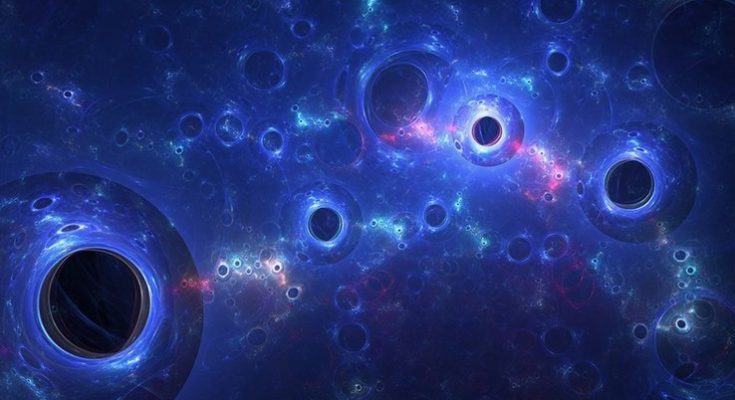Dark matter is one of the greatest mysteries in modern physics. It is an invisible substance that makes up approximately 27% of the universe, yet it neither emits nor absorbs light, making it undetectable through conventional means. Despite its elusive nature, scientists have found indirect evidence of its existence through its gravitational effects on galaxies and cosmic structures. But what exactly is dark matter, and why is it so important? This article explores what we currently know about dark matter, the leading theories explaining its existence, and how scientists are searching for answers.
Evidence for Dark Matter
Although dark matter cannot be observed directly, multiple lines of evidence suggest its presence:
1. Galaxy Rotation Curves
In the 1970s, astronomer Vera Rubin discovered that stars in galaxies rotate at speeds that cannot be explained by visible matter alone. According to Newtonian mechanics, the outer stars in a galaxy should move more slowly than those near the center. However, observations show that outer stars maintain high speeds, suggesting that an unseen mass—dark matter—must be providing additional gravitational pull.
2. Gravitational Lensing
Einstein’s theory of general relativity predicts that massive objects can bend light from background sources, a phenomenon known as gravitational lensing. Scientists have observed gravitational lensing effects that cannot be accounted for by visible matter alone, indicating the presence of a hidden mass—dark matter.
3. Cosmic Microwave Background (CMB) Radiation
The CMB, the afterglow of the Big Bang, provides crucial information about the early universe. Observations from missions like the Planck satellite show fluctuations in temperature that suggest the universe contains significantly more mass than what we can see, further supporting the existence of dark matter.
4. Large-Scale Structure Formation
Galaxies and galaxy clusters form in patterns that suggest the influence of an unseen mass. Without dark matter, the universe’s structure would not have developed as it has within the known timeline.
Leading Theories on Dark Matter
While scientists agree that dark matter exists, its exact nature remains unknown. Several theories attempt to explain what dark matter could be composed of:
1. Weakly Interacting Massive Particles (WIMPs)
One of the most popular hypotheses is that dark matter consists of WIMPs. These hypothetical particles interact with normal matter only through gravity and the weak nuclear force, making them extremely difficult to detect. Large underground detectors, such as the Xenon1T experiment, are searching for signs of WIMP interactions.
2. Axions
Another candidate for dark matter is the axion, a hypothetical particle that could help solve issues in quantum chromodynamics (QCD). Axions are expected to be extremely light and could be detected through their interactions with magnetic fields.
3. Sterile Neutrinos
Some physicists propose that an undiscovered type of neutrino, called a sterile neutrino, could be a component of dark matter. Unlike ordinary neutrinos, sterile neutrinos would only interact through gravity, making them nearly impossible to detect directly.
4. Modified Gravity Theories
An alternative approach suggests that dark matter may not exist as a physical substance but rather that our understanding of gravity is incomplete. Theories such as Modified Newtonian Dynamics (MOND) propose adjustments to gravitational laws to explain galactic rotation curves without requiring dark matter.
How Scientists Are Searching for Dark Matter
Researchers use multiple approaches to detect and study dark matter:
1. Direct Detection Experiments
Laboratories around the world, such as the Large Underground Xenon (LUX) experiment, use highly sensitive detectors buried deep underground to minimize interference from cosmic radiation. These detectors aim to observe rare interactions between dark matter particles and normal matter.
2. Collider Experiments
Particle accelerators like the Large Hadron Collider (LHC) attempt to create dark matter particles through high-energy collisions. By analyzing missing energy in particle interactions, scientists hope to find indirect evidence of dark matter.
3. Astrophysical Observations
Space-based telescopes like the Hubble Space Telescope and the James Webb Space Telescope continue to study cosmic structures affected by dark matter’s gravitational influence. Future missions may provide more clues about its nature.
The Future of Dark Matter Research
Although we have made significant progress in understanding dark matter, much remains unknown. Upcoming experiments, including next-generation direct detection facilities and improved space observations, may finally unveil the true nature of this mysterious substance. If dark matter is discovered, it could revolutionize our understanding of the universe, leading to new physics beyond the Standard Model.
Conclusion
Dark matter remains one of the biggest enigmas in astrophysics. While its existence is supported by multiple lines of evidence, its true nature is still a mystery. The search for dark matter continues to be one of the most exciting frontiers in physics, with the potential to unlock secrets about the cosmos that have remained hidden for centuries.




